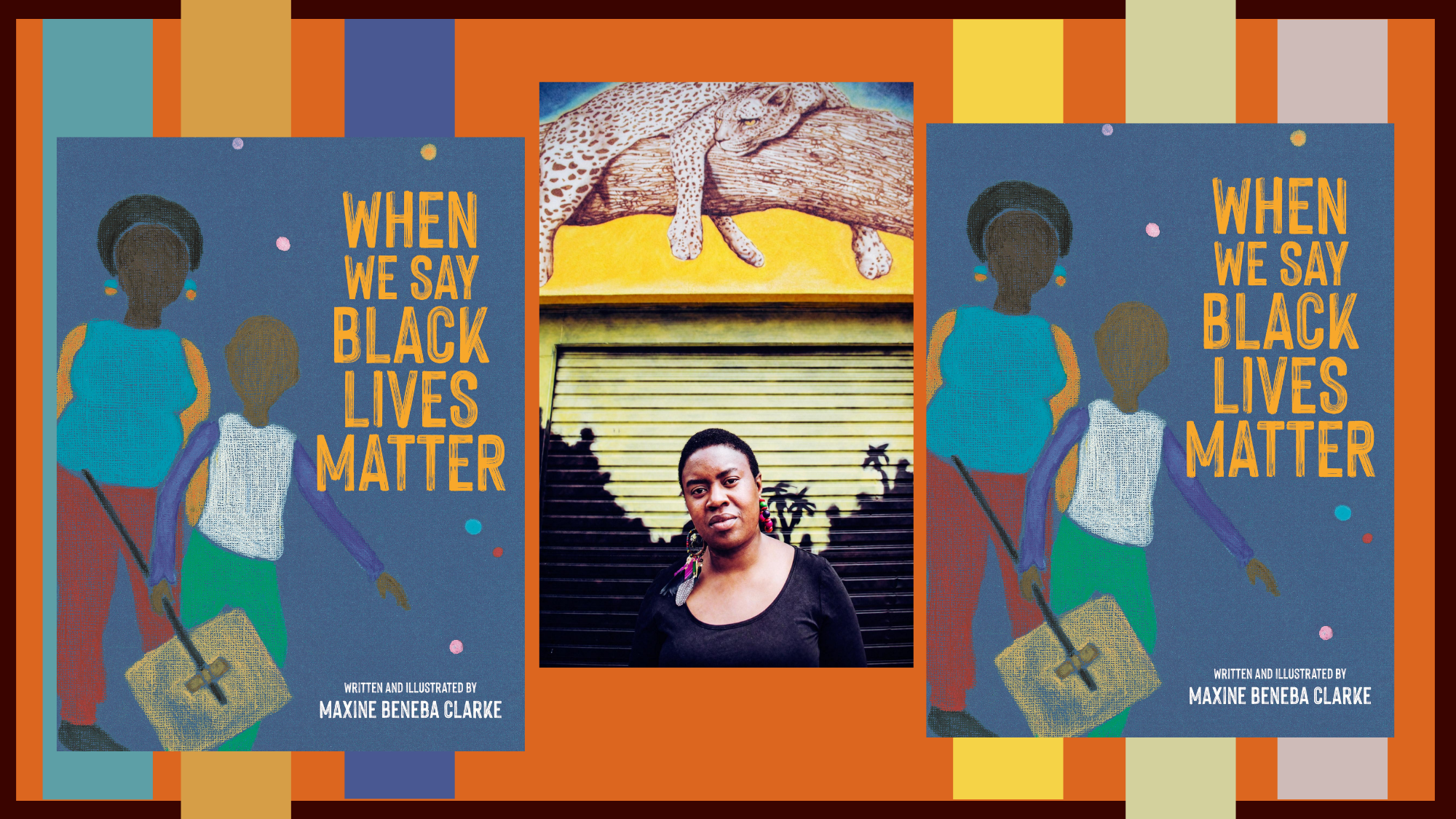New Zealand author Swapna Haddow interviews award winning Australian author Maxine Beneba Clark about her latest book: When We Say Black Lives Matter, a powerful and timely poem that addresses the Black Lives Matter movement.

Maxine Beneba Clarke is the highly-celebrated author who made waves with her critically acclaimed short fiction collection Foreign Soil when she won the ABIA for Literary Fiction Book of the Year 2015 and the 2015 Indie Book Award for Debut Fiction. She had long since been a published poet and went on to be named as one of the Sydney Morning Herald’s Best Young Novelists for 2015. The Hate Race, her memoir about growing up Black in Australia won the NSW Premier’s Literary Award Multicultural NSW Award 2017 and was shortlisted for an array of awards including the Victorian Premier’s Literary Awards.
So it was an absolute honour when Maxine agreed to chat with me for The Sapling about her brand new book When We Say Black Lives Matter.
Swapna: Maxine, tell us about your new book and the process of writing and illustrating it:
Maxine: When We Say Black Lives Matter is a poem about Black lives, Black love, Black activism, Black rage, and Black empowerment. In the illustrations for When We Say Black Lives Matter, a black child’s parents explain, from birth to graduation, what the term Black Lives Matter means to them: in protest and song, in joy and in sorrow.
I was inspired to write and create When We Say Black Lives Matter, when thinking about how to explain the concept of Black Lives Matter to the young African diaspora kids in my extended family, living in over eight different countries across the world – including America, Australia, Germany, Barbados and England.
When We Say Black Lives Matter is a poem about Black lives, Black love, Black activism, Black rage, and Black empowerment
The illustrations were created using dissolved and undissolved soft-lead watercolour pencil, on heavily textured coloured card stock. The 1960’s palette of tans, khaki’s and deep browns paired with vibrant jewel-tones like ruby, emerald and turquoise, is intended to bring the mood and energy of the civil rights era to our contemporary understanding of the global Black Lives Matter movement.
The fractured ‘stained glass window’ illustration technique used throughout the book is a nod to Black churches and religious buildings as the heart of community solidarity and civil rights organising. This stained glass drawing technique is also intended to be a reminder of the atrocities that have been committed within these religious buildings: from the 16th Street Baptist Church bombing in Birmingham Alabama in 1963, to the 2015 racially motivated mass shooting at the Emmanuel African Methodist Episcopal church in Charleston, South Carolina.
S: How do you hope the book will be received?
M: I hope the book will be received in the spirit in which it’s given – with strength, with love, with openness, and with a resolution to fight for a better and more equitable future.
I hope the book will be received in the spirit in which it’s given – with strength, with love, with openness, and with a resolution to fight for a better and more equitable future.
S: It is so important that children see themselves and see others in books. When did you first see yourself reflected in literature and how did that feel?
M: I remember seeing myself in very few picture books as a small child. The ‘internet age’ hadn’t quite dawned, so it was difficult to find Black picture books in Australia. When my parents did manage to find them, it was almost stunning to see myself reflected back from the page. Often though, there’s a mantra that children from diverse backgrounds need to see themselves on the page, and that mantra overwhelms any other narrative when a book like this is released. That mantra is a true and important refrain, but we mustn’t forget how important it is for every child to read about people different to them, as well as people similar. Otherwise, what are we teaching our small children about whose stories matter, and how will that impact the world they grow to shape?
S: Moving forwards with regards to diversity in children’s publishing, what would you want to see?
M: I’d like to walk into any bookstore, classroom or library in the world, and see child protagonists of all shapes, colours, abilities and sizes in the pages of the books featured there, with an emphasis on Own Voices narratives.
I’d like to walk into any bookstore, classroom or library in the world, and see child protagonists of all shapes, colours, abilities and sizes in the pages of the books featured there, with an emphasis on Own Voices narratives.
S: Can you tell us what you are working on next?
M: I have a couple kids book ideas germinating at the moment – but nothing I can announce with any certainty yet. Part of the fun is in seeing which ideas grow from seed, to stalk, to flower.
Thank you so much to Maxine and Tess Connelly for this brilliant interview. When We Say Black Lives Matter is a stunning read and is an empowering, timely poem that should be on every bookshelf.

Swapna Haddow
Swapna Haddow, who also writes as Swapna Reddy, is the award-winning children’s author of the Dave Pigeon books. She loves writing about boisterous animals and madcap adventures and is working with Faber & Faber, Macmillan, Oxford University Press and Scholastic to bring stories to young readers around the world.
Swapna lives in New Zealand with her husband, son and their dog, Archie. When she’s not writing she is usually reading, dreaming about living on a boat or eating Jaffa Cakes.



